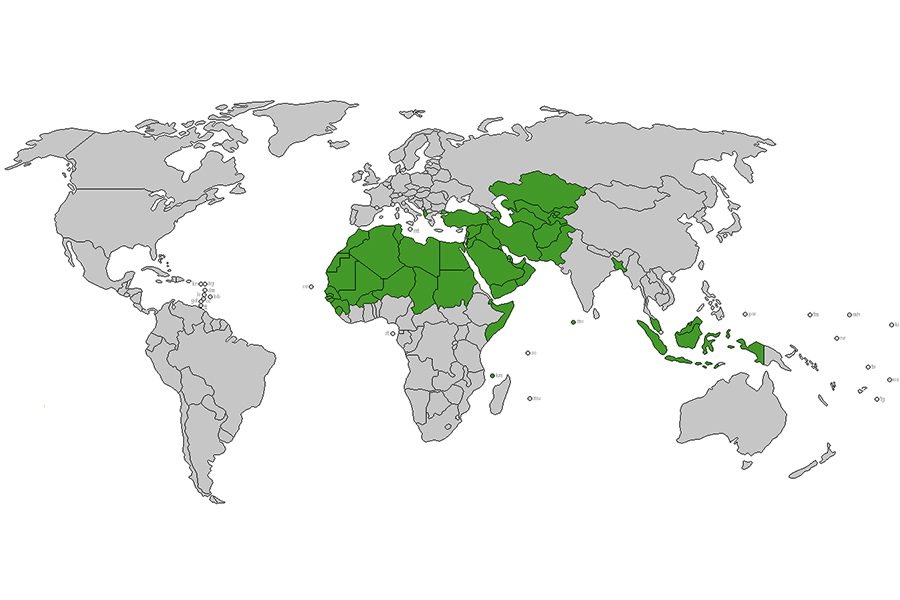
 As easy as it may be to reduce the conflicts in the Middle East to “red team versus blue team,” it’s not that simple. The Middle East is a region tangled within its own cold war: the Iran-Saudi Arabia proxy conflict. There are many players in this conflict, all of whom are engaged in this power struggle between Iran and Saudi, whose origins of conflict date back to the Iranian Revolution of 1979.
As easy as it may be to reduce the conflicts in the Middle East to “red team versus blue team,” it’s not that simple. The Middle East is a region tangled within its own cold war: the Iran-Saudi Arabia proxy conflict. There are many players in this conflict, all of whom are engaged in this power struggle between Iran and Saudi, whose origins of conflict date back to the Iranian Revolution of 1979.
After the revolution, Iran assumed a theocratic system of government that was poorly received by both conservative Sunni monarchies (i.e., Saudi Arabia) and the United States due to their new government’s anti-American rhetoric and Shia Islamic government. Given that the U.S. and Saudi Arabia have been long-standing allies with a mutually dependent relationship, they both emerge as formidable opponents to the Iranian government. The tension is further complicated presently, after the rise of ISIS in recent years in addition to the Syrian civil war.
After the Arab Spring, a series of protests ensued throughout Syria, to which the Syrian president, Bashar al-Assad, responded with extreme violence, killing hundreds of demonstrators and imprisoning others. In response, Sunni rebel groups formed with the intent of overthrowing the government. The violence brought international attention, with Iran backing Assad’s regime (as both are Shia) and Saudi Arabia backing the rebels (as both are Sunni).
In Iraq, the Shia-led government faced the dangerous threat of ISIS, a Sunni extremist group. In response to this threat, Iran backed the Iraqi Shiite Militia to fight ISIS. Iraq is one of the few countries that’s allied with both Iran and the United States. And despite the assistance provided by Iran, the U.S. and Saudi Arabia want to turn Iraq away from Iran, but this is difficult since Iran has powerful allies in Iraqi politics. If not already complicated enough, the complexity of the conflict is only furthered with Lebanon.
Hezbollah is a Shia militia and political group in Lebanon with a significant amount of power. They have backed Assad’s regime (Shia) in Syria by fighting against the rebels (Sunni), much to the displeasure of Saudi Arabia (Sunni). This is not the only aspect of Hezbollah that has angered Saudi Arabia, however, as they are involved intimately with Iran, receiving millions in monetary and weaponry funds. They have assisted in recruiting, training and arming a range of new militant groups with the intent of advancing Iran’s agenda.
To word it in the most facile of ways, one could consider the conflict as Iran, Hezbollah and Assad’s regime versus Saudi Arabia and the United States. However, there are still two key players wedged in the middle in the fight for a stable, democratic government: Iraq and the Syrian Democratic Forces.
After the expulsion and near-eradication of much of ISIS, Iraq now stands at a crucial point after years of war and violence. Will Iraq be able to rise as a stable, functioning democracy united with its Shiite, Sunni and Kurdish populations? The prime minister of Iraq is intent on achieving this, but the odds seem unlikely. As a state allied with both the U.S. and Iran, each side will try to sway them in a particular direction, including Saudi Arabia, due to its very tense relationship with Iran. Iran has assisted Iraq in pushing back ISIS, and now that ISIS is near the brink of total eradication, Iran’s extensive reach of power poses an issue for Iraq. Both Iranian and Saudi influences in Iraq could inhibit this democratic movement, as both have strong affiliations to two different sects of Islam that have a history deeply rooted in conflict with one another. If Iraq fails to democratize or continues with its current system of government, one could expect to see them embroiled in the proxy war for years to come.
The Syrian Democratic Forces face a similar battle. The SDF is a rebel group primarily composed of Sunni Kurds who have been instrumental in expelling ISIS from the region. Not only are they in the fight against ISIS, but they are also in the fight for democracy. The rebel group, which opposes Assad, advocates for secular democracy in Syria. If successful, this could radically change the course of Syria and the lives of many Syrians who have been suffering for years in what has been labeled the worst refugee crisis since World War II. If Iran and Hezbollah continue to extend their support to Assad’s regime, it would make the fight to democratize onerous, as they would be up against two very powerful groups. Despite much resentment for Assad, there is still a vested interest from Iran to ensure that a Shiite government formulates, as this would allow Iran to further extend its power in the region.
It’s easy to connect the lines between political alliances and Sunni and Shia labels, and as much as these labels dictate these alliances, it’s not about religion; this is about political control. The issue lies in the fact that, historically, these two labels have proven to be a source of much division. Labeling “Sunni” and “Shia,” much like “Red Team” and “Blue Team,” is a swift way to create opposition. Saudi Arabia and Iran, both as major players in the region, are fighting for political supremacy, and the easiest way to do so is to take an already divisive label and draw lines between the various countries’ religious affiliations. This is a power struggle, and these labels presently appear to be the most efficient means to ensure that struggle persists for years to come.
Written by: Hanadi Jordan — hajordan@ucdavis.edu
Disclaimer: The views and opinions expressed by individual columnists belong to the columnists alone and do not necessarily indicate the views and opinions held by The California Aggie.



